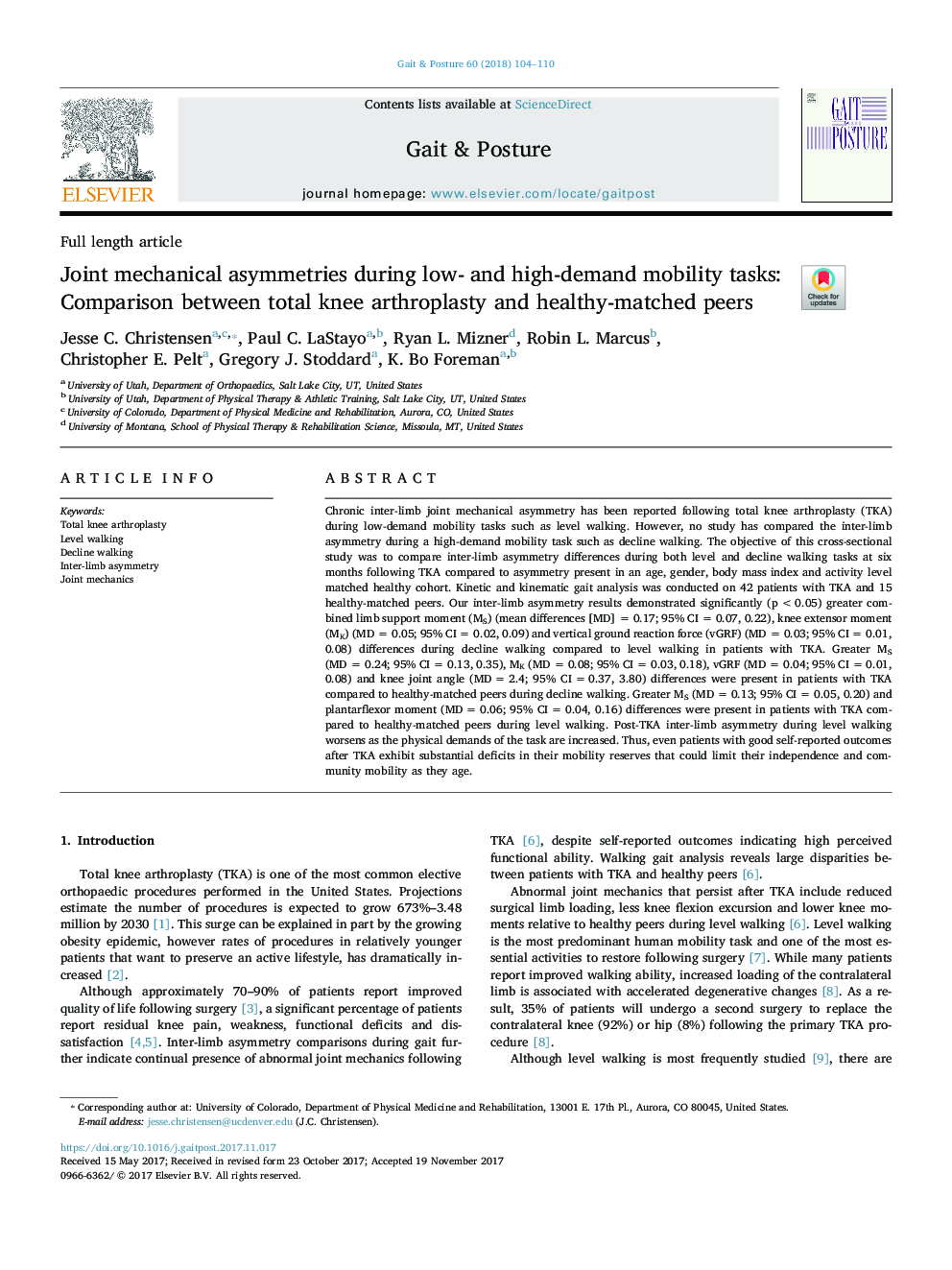| کد مقاله | کد نشریه | سال انتشار | مقاله انگلیسی | نسخه تمام متن |
|---|---|---|---|---|
| 8798635 | 1603835 | 2018 | 7 صفحه PDF | دانلود رایگان |
عنوان انگلیسی مقاله ISI
Joint mechanical asymmetries during low- and high-demand mobility tasks: Comparison between total knee arthroplasty and healthy-matched peers
ترجمه فارسی عنوان
عدم تقارن مکانیکی در طول وظایف حرکتی کم و زیاد: تقسیم آرتروپلاستی کل زانو و همسالان همسان سالم
دانلود مقاله + سفارش ترجمه
دانلود مقاله ISI انگلیسی
رایگان برای ایرانیان
کلمات کلیدی
آرتروپلاستی کامل زانو، پیاده روی سطح، رها کردن راه رفتن، عدم تقارن بین-اندام، مکانیک مشترک،
موضوعات مرتبط
علوم پزشکی و سلامت
پزشکی و دندانپزشکی
ارتوپدی، پزشکی ورزشی و توانبخشی
چکیده انگلیسی
Chronic inter-limb joint mechanical asymmetry has been reported following total knee arthroplasty (TKA) during low-demand mobility tasks such as level walking. However, no study has compared the inter-limb asymmetry during a high-demand mobility task such as decline walking. The objective of this cross-sectional study was to compare inter-limb asymmetry differences during both level and decline walking tasks at six months following TKA compared to asymmetry present in an age, gender, body mass index and activity level matched healthy cohort. Kinetic and kinematic gait analysis was conducted on 42 patients with TKA and 15 healthy-matched peers. Our inter-limb asymmetry results demonstrated significantly (p < 0.05) greater combined limb support moment (MS) (mean differences [MD] = 0.17; 95% CI = 0.07, 0.22), knee extensor moment (MK) (MD = 0.05; 95% CI = 0.02, 0.09) and vertical ground reaction force (vGRF) (MD = 0.03; 95% CI = 0.01, 0.08) differences during decline walking compared to level walking in patients with TKA. Greater MS (MD = 0.24; 95% CI = 0.13, 0.35), MK (MD = 0.08; 95% CI = 0.03, 0.18), vGRF (MD = 0.04; 95% CI = 0.01, 0.08) and knee joint angle (MD = 2.4; 95% CI = 0.37, 3.80) differences were present in patients with TKA compared to healthy-matched peers during decline walking. Greater MS (MD = 0.13; 95% CI = 0.05, 0.20) and plantarflexor moment (MD = 0.06; 95% CI = 0.04, 0.16) differences were present in patients with TKA compared to healthy-matched peers during level walking. Post-TKA inter-limb asymmetry during level walking worsens as the physical demands of the task are increased. Thus, even patients with good self-reported outcomes after TKA exhibit substantial deficits in their mobility reserves that could limit their independence and community mobility as they age.
ناشر
Database: Elsevier - ScienceDirect (ساینس دایرکت)
Journal: Gait & Posture - Volume 60, February 2018, Pages 104-110
Journal: Gait & Posture - Volume 60, February 2018, Pages 104-110
نویسندگان
Jesse C. Christensen, Paul C. LaStayo, Ryan L. Mizner, Robin L. Marcus, Christopher E. Pelt, Gregory J. Stoddard, K. Bo Foreman,
